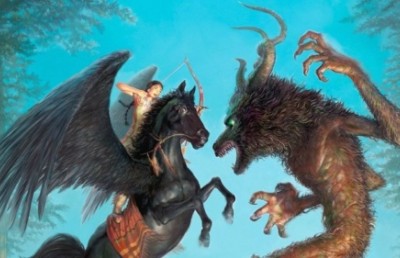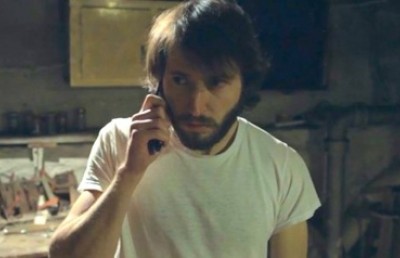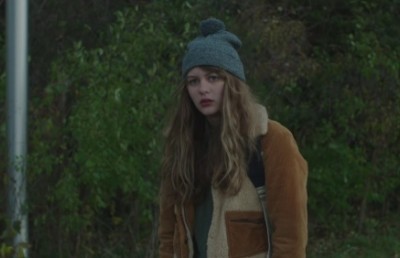Home Is Where The Horror Is: Representations of Family at Fantasia 2015
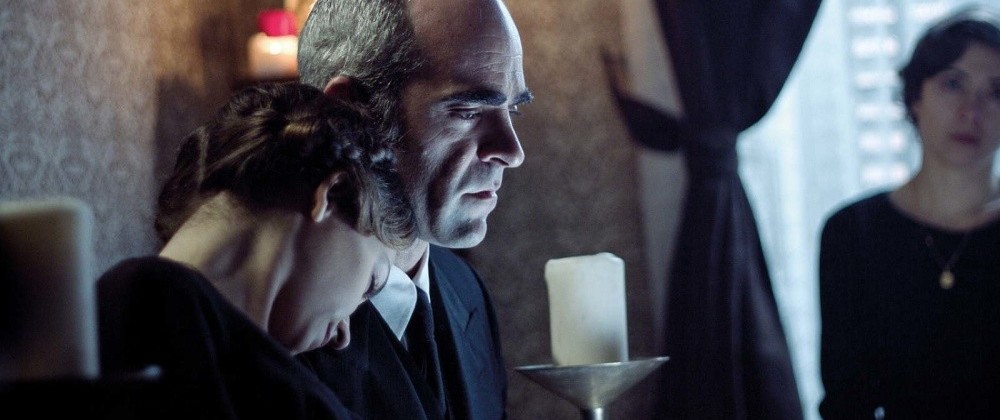
Themes of family are not new to the horror genre. The enclosed, private spaces created by the family unit become the perfect arena in which all manner of strange and frightening circumstances can be imagined. Moreover, the family is also comprised of those who are able to shape, influence, warp, and destroy each other through their closeness. The genre abounds with frightening families and vicious villains who love or loathe their mothers and fathers (or both!). How about Sunday night dinner with The Texas Chainsaw Massacre? Or Norman Bates and his delightful mother? The Seventies heyday of horror literally crawls with boundless examples of mutant babies and monstrous mirrors of the typical American family. Though these types of films don’t appear as swiftly and steadily as they once did, many contemporary horror films still attempt to tear down the traditional family. Guillermo del Toro’s gothic ghost story Crimson Peak (2015), for example, features the twisted brother and sister duo of Lucille and Thomas Sharpe [and del Toro is going to be honored at this year’s 2016 run-out of Fantasia]; or how about Aux yeux des vivants (2014), featuring one of the scariest father and son duos in recent French horror film history. Aux yeux des vivants was also screened at the 2014 incarnation of the genre festival Fantasia, and it came as no surprise that the festival continues to feature titles that use the family to disturb, intrigue, and terrify. In 2015’s 19th edition of the world-renowned festival, three titles in particular stood out to me: Shrew’s Nest (Juanfer Andrés, Esteban Roel, 2014), Goodnight Mommy (Severin Fiala, Veronika Franz, 2014), and Cruel (Eric Cherrière, 2014).
Representing three countries, three aesthetics, and three vastly different plot lines, Shrew’s Nest, Goodnight Mommy, and Cruel provide an excellent cross-section of modern family horror. Shrew’s Nest is a Spanish gothic horror that takes place in a rambling apartment unit inhabited by two sisters. It is clear from the start that the older sister, Montse, is more than a little possessive and over-protective of her younger sibling. When upstairs neighbour Carlos takes a tumble down the stairs and lands at their door, things start to take a very dark turn… Full of stifling atmosphere, a dash of erotica, and nail-biting tension from start to finish, Shrew’s Nest uses the strange relationship between the two sisters to create a film that is both terrifying and heartbreaking.
Austria’s Goodnight Mommy haunted my dreams for weeks after viewing. Set in an isolated home bordered by forest, a mother returns home from a recent plastic surgery to her twin sons, Lukas and Elias. The scene is set with normalcy and idyllic calm as the twins frolic in the pastoral setting, a testament to the sun-drenched fun of summertime until the atmosphere grows progressively more disquieting and the suspense builds towards a terrifying crescendo. Note to self: Do not have twins or plastic surgery.
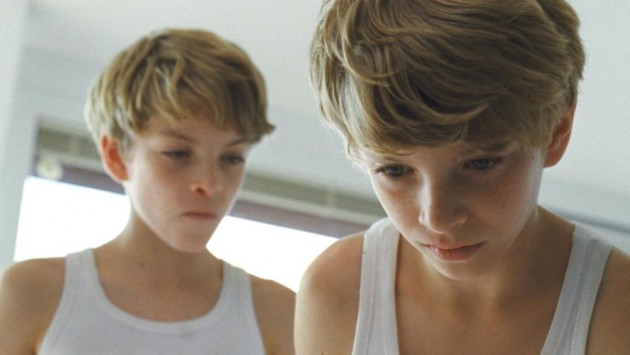
Goodnight Mommy
And finally, Cruel, a French film that follows the lonely, and existential Pierre Tardieu. Oh, and he’s also a serial killer who meticulously stalks people, kidnaps them, and tortures and kills them in his basement. If it sounds disturbing, it’s because it is. However the film is also slow-moving, beautiful and sad. Family may not appear to be at the forefront, but the theme certainly lies close beneath the surface as Pierre deals with his sick father and thinks constantly of a single, perfect day at the seaside with his mother.
Though none of these films contain a stereotypical nuclear family—that unit that stubbornly remains the representation of family in the collective consciousness of so many cultures: Papa Bear, Mama Bear, and Baby Bear—this familial construct is still represented by the characters within the films through the physical absence of key members. Death or divorce has removed mothers or fathers or both from the picture, leaving behind some rather disturbed children at the center of each narrative. After decades of being used as the nucleus of countless horror films, what is it about the family that allows it to remain such a powerful force within the genre?
It is true that the family lingers to this day as the dominant unit in society, remaining “stubbornly intact despite high increases in divorce and physical and mental abuse within its walls documented beyond any shadow of doubt over the past several decades.” 1 As a subversive genre that tends to enjoy warping familiar and dominant institutions, it is only logical that the family, so rigid an institution, should become the site of many a dark tale. Whether they are at the forefront or haunting the mind of a killer, these films feature families under many angles as the characters in these films suffer from or deliver terror that is connected and interwoven with their families both in the past and in the present. You certainly won’t feel any warm fuzzies about family life after viewing any of these films. Fear, sadness, horror, and revulsion dominate. How do these films use elements of the horror genre to explore familial themes? What is revealed in their explorations of these themes? What are the ultimate messages concerning family?
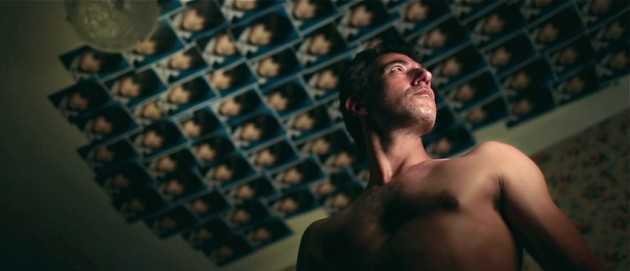
Cruel
The tendency of horror film is often to reflect back on its viewers a monstrous, violent, and often bloody view of what people and society view as a “normal” part of daily existence. Capitalism, gender, the idea that man controls nature, and religion, have all been used as fodder for horror. So too has the “home space,” the long-taught and long-believed sanctity of the established family norm, been attacked. In Tony Williams’ text on horror and family, Hearths of Darkness, he offers a succinct definition of the word:
The family plays a significant role in any society determining everyone’s psychic and social formation according to changing historical, political, and ideological dimensions. Families may be complex entities, good or bad, depending on particular circumstances. As an institutional prop of bourgeoisie capitalism, producing colonized subjects and reproducing ideological values, the family is extremely dangerous.” 2
Horror film plays an active role in critical social meaning, and the family, if seen as an essentially bourgeois structure, a form of containment and hierarchy within a conservative society, is primed for revolutionary take down. With a genre that has so many times been the vehicle for anti-reactionary thought, a violent tear-down of the family structure through the medium was inevitable. The family is the seat of psychological tension and dissonance and without it, “nurturing will
be a public task through all ages of life.” 3 In the writings of K’ang You-wei, a Chinese scholar and philosopher, he states that without the traditional family structure:
There will be no husbands and wives, and so there will be no fighting over sexual desire, no provisions against sexual immorality, no repressive regulations of bearing of grievances, no resentment or hatred, no divorces, no miseries of punishment and killing. There will be no family relationships, and so there will be no need to support [one’s family members], no compulsion to do the right thing [by them], no wrangling over [property shares]. There will be no nobility, and so there will be no depending upon intimidation or coercion, no oppression, no grabbling, no intriguing for position, no toadying. There will be no private property… There will be no class divisions, and so there will be no mistreatment or oppressive laws and their violation and opposition.” 4
Though the cynic in me can’t help but be skeptical of such an idealistic declaration, Kang does argue quite persuasively that a utopian world could be attainable with the abolishment of the family order. Williams argues that whether this world of peace, love, and equality is within our reach or not, “we are more deeply within the Age of Disorder than ever before. Warning signs certainly exist [and] the family horror film is still one of them.” 5 Despite the rise in divorce rates and the continued documentation of the physical and emotional abuse that occurs within the family walls, the family is still upheld as the most dominant institution in the Western world, an institution that enforces conformity and the ongoing ideologies that grease the wheels of capitalist society. The “age of disorder” is one in which “political and national boundaries and inequality between men and women” is the norm. 6
Horror film, as a sometimes purveyor of social change, lashes out with brute force against the family institution that plays such a large role in this age of disorder. While the horror films of the Sixties and Seventies were striving to tear down the nuclear family as a whole, these films reflect a more contemporary view of the family structure. What immediately comes to mind is a film such as The Texas Chainsaw Massacre wherein Leatherface and company, in all their cannibalistic, murderous glory, were still an intact family unit. Three generations worth of this family sat around the dinner table, torturing young ladies tied to chairs as a moment of “coming together” for this twisted bunch. In Shrew’s Nest, Goodnight Mommy, and Cruel, the nuclear family unit has already been fractured, whether by divorce or death, these are fragments of families – a condition more attuned to the modern viewer – but the imperative is still there to expose and warn of how families, as they exist now, can ultimately destroy us.
Shrew’s Nest, by far one of my favourite screenings during the festival, blends melodrama and gothic horror into something that is truly sumptuous to behold. The film explores the dark side of love and family in a way that is at once terrifying and beautiful, full of saturated colours and rife with a suffocating melancholy. It is the only film of the three that is overtly gothic, and its use of gothic tropes lend themselves spectacularly well to the film’s portrayal of family. The fundamentals of the gothic such as “the guileless protagonist, a forbidden liaison, secret pacts, a labyrinthine interior space in which normative social values are inverted, and the return of the repressed” are infused with the tense and melodramatic relationship between the two sisters. 7 The result is that the gothic elements are used to test the limits of the family structure to their breaking point, to torture and inflict violence upon that structure.
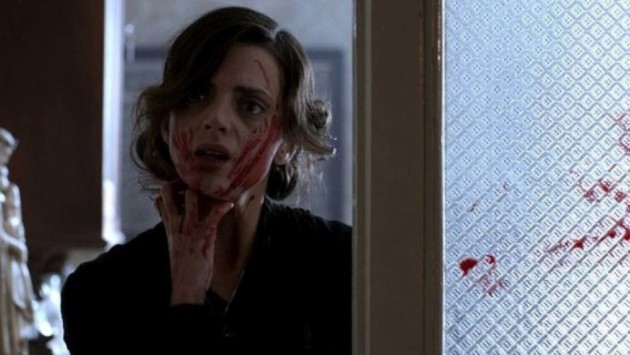
Shrew’s Nest
Shrew’s Nest is set exclusively within the old apartment unit inhabited by Montse and her younger sister. The gothic lends itself well to horror films that deal with family, especially when it comes to hidden family secrets that take place within the walls of the family home. The dark side of family, its propensity to become a web of dark secrets and closets full of skeletons, is reflected in the seemingly endless corridors of the girls’ apartment and the constantly locked doors. Here, family secrets are literally rotting within the walls. Presumably, this has been the family home since the two were children, according to allusions made by the two sisters. Though the younger sister, simply referred to as “La Niña,” is able to leave the apartment for work, Montse seems to suffer from extreme agoraphobia. Additionally, she is fiercely over-protective of her sister in a way that borders on possessive – the set-up has been established for some serious family melodrama. The melodramatic slant of Shrew’s Nest enhances the urgency of the film’s message. In its simplest form, theories of melodrama were traditionally, from the feminist standpoint, “stressing the genre’s address to white female viewers’ sufferings and frustrations within the patriarchal codes of the middle-class family in the West.” 8 Anne Kaplan discusses how this view can be expanded by looking at melodrama through trauma theory.
Though contemporary film theory has moved away from the sometimes reductive structures of psychoanalysis, it nonetheless remains a valuable critical tool for discussing films that evoke such visceral physical and emotional responses. Kaplan uses Freud’s theory of trauma (the idea that trauma is linked to fantasy as well as a sudden overwhelming event) to “provide a way of connecting the unconscious and history.” 9 In an interview with the directors, Juanfer Andrés is quoted as saying, “the History of Spain. Montse and the Girl were ‘the two Spains’: the old-fashion, ultra-religious and devoted to past traditions, and the young, rebel and willing to be part of the world.” [[Anele, Spanish Fear.
The film, furthermore, provides us with a female perspective of Spanish history. In Francoist Spain, the fascist regime encouraged a return to tradition. This included the idea of “true Catholic womanhood [that] restored Spanish traditional womanly virtues: self-sacrifice, obedience, and strict chastity.” 10 Fiercely devout and certainly chaste, Montse is a twisted representation of this “true Catholic woman,” but rather than presented as a serene, nun-like creature, her Catholicism has rendered her truly insane. La Niña, embodying freedom and modernity, struggles to survive as her older sister attempts to stifle, beat her down, and jail her. The metaphor is clear: This is the consequence of the enforced ideology and the colonized subjects that are created by the family unit.
While Cruel does not follow the same gothic traditions of Shrew’s Nest, the dark, dungeon-like basement hidden beneath Pierre’s home contains echoes of that gothic genre while also connecting to Pierre’s family past, brought forward into his monstrous future. Once used by his grandfather to hide Jews during the Second World War, the hidden basement whose stone walls and twisting passageways recall the old castles of gothic literature, is now the site of Pierre’s torture chamber. As the camera follows Pierre through the twists and turns that lead to where his victim lies trapped, a sense of dread is established and we know that Pierre is the monster lurking in the castle. It is significant that the basement is not an ambiguous location, but part of the family home. Pierre, though a cold-blooded killer, is just as imprisoned in the family seat as his victims and the viewers. The setting is simply another layer of Pierre’s psychology, the site of connection between him, his child self, his geriatric father, and his dead mother. Between those walls he is haunted by memories of a past that shaped him and will not let him go.
Goodnight Mommy is a contemporaneously set gothic psychological horror, a genre that is rife with mysterious, unknown figures. In Goodnight Mommy, Mommy herself, with her bandaged face (a rather clever play on our favourite Egyptian monster), becomes the malevolent and mysterious figure in the eyes of Elias and Lukas. She is initially framed as a sort of “madwoman in the attic” in the tradition of Jane Eyre, as well as a sexless figure with an air of malignancy about her. The two brothers embody an innocence that is typical of gothic protagonists. Lukas and Elias inhabit enclosed and labyrinthine spaces represented by the cornfields and the caves littered with skulls. The sprawling, crumbling aristocratic mansion of the gothic becomes instead a modern, glass and steel space that is nonetheless bathed in a pervasive sense of gloom – a space that eventually becomes a tomb. But at a certain point, the “innocent” boys become increasingly more insidious while we begin to sense an ominous danger creeping slowly towards the once suspicious figure of the mother – the tables turn and she becomes the helpless, trapped victim of the gothic tradition.
The pervasive feeling of being trapped by one’s own family that was such an integral part of Shrew’s Nest continues in Goodnight Mommy. Here, too, the home becomes the prison. Mommy dearest drifts her isolated home, unaware of the dangers that lurk in the guise of her own son, until she finds herself literally tied down by her children. In an interview with Catherine Chapman of The Creators Project, the directors (Veronika Franz, Severin Fiala) of Goodnight Mommy, are asked: “What issues does Goodnight Mommy tackle?” To which Veronika Franz replies, “It’s… about family. About parenting. About the loss of trust. About all the pieces within a family and how they communicate.” [[Chapman, The Creators Project.
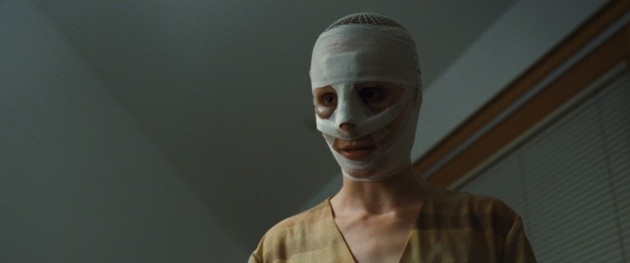
Goodnight Mommy
The three films also speak to a gothic literary tradition that emerged after the 18th century beginning in the mid-19th century. The wild romanticism that had existed previously, the world of crumbling castles and deformed monsters, gave way to “terrors and horrors that [were] much closer to home.” 11 In this new incarnation of the genre, “mysteries of the mind or of family pasts were the central interest, the human and social world completely replaced the grand gothic terrors of a supernatural kind.” 12 Here we saw the emergence of the gothic ghost story wherein the ghost is representative of “human desires and neuroses” 13 swathed in a veneer of the supernatural. When looking at film, we know that “filmic representations [of family] often depict traumatic disturbances by using formal codes of supernatural horror and spectacular violence” 14 and in the case of Shrew’s Nest, Cruel, and Goodnight Mommy, each utilize the gothic ghost, using it as both a catalyst and an explanation for the violent acts committed by the characters.
The characters of Montse (Shrew’s Nest), Pierre (Cruel), and Elias (Goodnight Mommy), are haunted by persons from their dark family pasts that appear to them and are made visible to the viewer. In Shrew’s Nest, Montse faces the spectre of her father at every turn – he taunts her, belittles her, and furthers her increasingly violent behaviour. The presence of Montse’s dead father is not only an indication of the abuse she suffered at his hands, but it is also tied in to the religious fervour that is twined so tightly with her rapidly decaying psychological state. In keeping with the gothic style that uses the type of ghost that is Montse’s father, that is, a ghost that is not inherently supernatural but is rather an outward manifestation of the state of mind of the character, Montse’s father takes on the role of representing an outdated and oppressive religious force. In other words, though the supernatural has been superseded by a more rational world where events are rooted in reality, “the force of delusion inspired by religious devotion still remains mysterious and inexplicable, and presents, not the victory of enlightenment, but a new and different type of darkness.” 15 Here we see represented within film a horrific and disturbing metaphor of the dangers that can be incurred by the family in the course of “reproducing ideological values,” or in this case, a Catholicism that poisons and ultimately destroys the family in Shrew’s Nest.
In Goodnight Mommy it is the deceased Lukas, only seen by his twin brother who cannot let him go. As with Shrew’s Nest, the violence is exacerbated by the family member that refuses to remain dead in the past. Here we see the consequences of grief not properly addressed. Lukas haunts his twin, always by his side, and we can see how this progresses into a cold violence orchestrated by Elias and his severe delusions. It seems as though the doomed family inhabits some sort of purgatory – they are so isolated, not only in their house on the edge of the woods, but the nearby village appears practically deserted, with its only inhabitants seemingly being a strange man with an accordion and a priest who does absolutely nothing to help the situation. Their only visitors are the charity workers who are also unable to do anything to save the family. It is a family destroyed by ghosts, manifesting only to the young Elias – ghosts of the family he once had but has no longer.
Similarly, Cruel features the “ghost” element as Pierre is haunted by his six-year-old self. This results in a “haunted house” feeling similar to that of Shrew’s Nest, especially considering that shortly after his first kill, Pierre starts hearing mysterious noises within his home that don’t seem to have a source. Cruel is somewhat set apart from Shrew’s Nest and Goodnight Mommy in that, aside from his father who is, as mentioned earlier, essentially a vegetable, there is less overt interaction between family members. Despite this, family is still very much at the forefront of this existential psychological horror. The film begins with an old family film showing a boy frolicking on a beach with his mother. A childish voice describes what he wants to do when he grows up. He wants to have a spaceship and a magic sword and eat vanilla ice cream every day. He wants to marry mommy and be a daddy. These are typical dreams of a child, the beginnings of a slight oedipal complex. However, none of this happens. Rather, Pierre Tardieu grows up to be a serial killer with OCD – always following his specific rules to avoid apprehension, including being forever alone. This is a strange, dream-like film that delves with melancholic existentialism into the mind of a killer, one who cannot seem to extricate himself from his six-year-old self.

Cruel
Like Shrew’s Nest and Goodnight Mommy, Cruel isn’t about one family being monstrous, but rather the monster that lies hidden within the family unit. Pierre is a ruthless killer who tortures his victims before looking into their eyes and killing them to feel alive, the film also shows a man who is lost and deeply sad. Though nothing concrete is ever specifically revealed, the constant flashbacks to the day at the beach with his mother suggest that his current incarnation was shaped by past events to do with his family. Take, for example, the fact that Pierre’s bedroom wall is covered in photographs of himself as a six-year-old boy. This boy beams down from row after row of identical school photographs, like some sort of inanimate angel that Pierre stares up at and speaks to. His room is littered in toys, detritus from his childhood days, as though his life ceased to change and grow after childhood. His repeated viewings of the same home movie seem to keep him rooted in his past, while his young self is continuously popping into his head with an enigmatic smile.
Another angle that is worth exploring between Shrew’s Nest, Goodnight Mommy, and Cruel is the role of the mother. Perhaps one of the most interesting of the three in this respect is Goodnight Mommy. By the film’s conclusion, I found myself thinking that an alternate title for the film could be Bad Mommy. Perhaps this sounds trite, but it’s all there in the narrative. The mother is divorced, she is vain (as evidenced by her recent facelift), and she is impatient with her son and quick to snap. As I previously discussed, by wrapping her up in a layer of bandages she is rendered monstrous, if not in the eyes of the viewer than at least in the eyes of her son. She is contrasted to the stereotypical version of a “good mother” through the opening act, which features a mother surrounded by her children, singing a lullaby in perfect harmony. Through her actions, she has become someone else from the beautiful, loving, and married mother of earlier years (as evidenced by her son’s memories). And, of course, this evil imposter of a mother must be punished!
This is nothing new for horror film: the mother has often been subsumed into the monstrous feminine, often existing to be punished or to be blamed for why a villain has turned out so very evil. But Goodnight Mommy approaches this often clichéd trope from a refreshing angle by switching her role as a monster to her children. Admittedly, it’s frustrating to know that the mother figure is still so often placed as either monster or madonna, either way lacking in depth of character. In Goodnight Mommy, though we know logically that the mother is not actually a monster and possibly not even a terrible mother, this fact doesn’t matter because we’re seeing the action through the eyes of a child who believes her to be a monster. We’re not given insight into her personality; she is only there to be tortured by her son, to the horror and glee of a gasping audience.
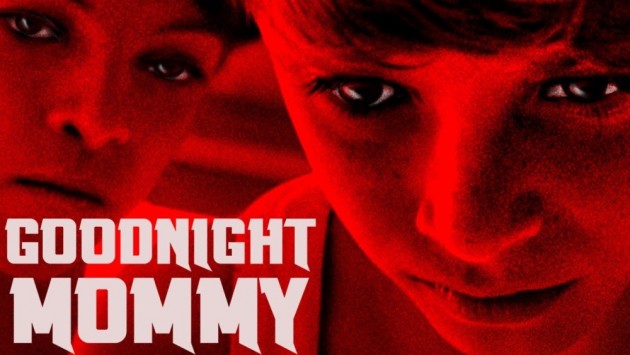
On the other side of the monstrous mother spectrum, there are the angelic mother figures of Shrew’s Nest and Cruel. In Cruel there dwells the ethereal figure of Pierre’s mother, shown only to us in brief moments during the home video clips. She wafts through Pierre’s memory like an ocean breeze, and at once haunts him and acts as the one calm spot in his otherwise tortured mind. It’s hinted at that his mother’s death is the event that set his life onto its disturbing path, the catalyst that emptied him of his ability to empathize and his need to kill in order to feel. In many ways, Pierre is a bizarre mash-up of Norman Bates and Albert Camus’ Meursault – his psychological detachment, his indifference towards human life, his observance of detail when watching people, his cold reaction to the death of a parent (his father), work in tandem with his obsession with his mother, who he cannot stop inventing morbid stories about, to create a sociopathic, existential killer with one heck of an Oedipal complex. Freud would have a field day.
Then there is the mother of Montse and La Niña who inhabits the same saintly space as Pierre’s. Also dying while the children were still young (La Niña still being an infant), she is at once revered and the cause of many of the issues that cast shadows over the two sister’s lives. For Montse, it’s the death of her beloved mother that begets the subsequent abuse by her alcoholic father, while La Niña is told that it was her birth that killed her mother, so she is constantly haunted by the guilt this brings her. The mother, as she is in Cruel, is then some ephemeral being who we never meet and barely see, yet who manages to affect the lives of her children from beyond the grave. In this sense, the mother, too, becomes a ghost. Unseen but ever-present in the lives of Montse and Laiña.
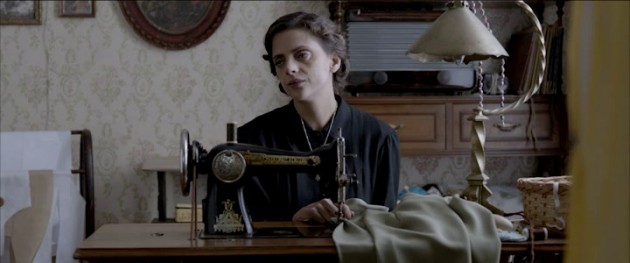
Shrew’s Nest
With Shrew’s Nest, Goodnight Mommy, and Cruel, it is clear that the horror film continues to comment on that one institution that continues to be the dominant force in normative society. Though, of course, not everyone’s family is full of murderers and terrifying secrets, this is the horror genre after all, and it revels in taking the darkest side of family values and revealing them to us in the most visually shocking way possible. As a warning, it’s pretty effective. At this year’s 20th edition of Fantasia, I’ll be looking out for more horror films that demolish the crumbling, decaying structure that is the contemporary family unit.
Works CitedAnele, Elena. “Q&A: Shrew’s Nest (Musarañas) Directors!” Spanish Fear. N.p., 24 Feb. 2015. Web. 13 May 2016.
Backus, Margot Gayle. The Gothic Family Romance: Heterosexuality, Child Sacrifice, and the Anglo-Irish Colonial Order. Durham, NC: Duke UP, 1999. Print.
Botting, Fred. The Gothic. Woodbridge, Suffolk: D.S. Brewer, 2001. Print.
Chapman, Catherine. “‘Goodnight Mommy’ Is the Rebirth of Austrian Horror.” The Creators Project. N.p., 20 Sept. 2015. Web. 13 May 2016.
Kang, Youwei, and Laurence G. Thompson. Ta T’ung Shu = The One-world Philosophy of K’ang Yu-Wei. London: George Allen & Unwin, 1958. Print.
Kaplan, E. Ann. “Reports and Debates. Melodrama, Cinema and Trauma.” Screen 42.2 (2001): 201-05. Web.
Morcillo, Aurora G. True Catholic Womanhood: Gender Ideology in Franco’s Spain. DeKalb, IL: Northern Illinois UP, 2000. Print.
Williams, Tony. Hearths of Darkness: The Family in the American Horror Film. Madison: Fairleigh Dickinson UP, 1996. Print.
Featured image from The Shrew’s Nest
Notes
- Williams, 12. ↩
- Williams, p. 21. ↩
- Williams, 16. ↩
- K’ang, 186. ↩
- Williams, 18. ↩
- Williams, 15. ↩
- Backus, 1. ↩
- Kaplan, 201. ↩
- Kaplan, 202. ↩
- Morcillo, 43. ↩
- Botting, 104. ↩
- Botting, 105. ↩
- Botting, 110. ↩
- Williams, 21. ↩
- Botting, 107. ↩



